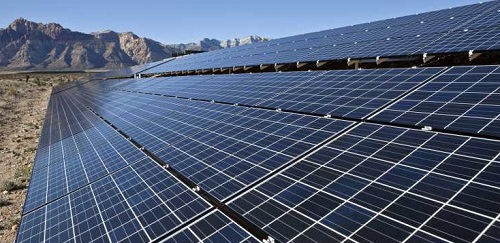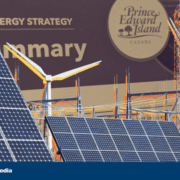At a windy mountain pass on the edge of the Mojave Desert, North America’s most potent collection of batteries used for unused power storage is humming its way towards an electricity revolution.
Southern California Edison (SCE), a utility that serves about 14-million people, has amassed more than 600,000 lithium-ion battery cells — enough to power 2,000 Chevrolet Volts — at a substation in Tehachapi, California. The $54m, two-year test project aims to collect and store power generated from the area’s 5,000 wind turbines.
Cost-effective storage for wind and solar energy is the industry’s holy grail, Morgan Stanley says. That’s because times of high output during sunny days or windy nights don’t always match peak demand.
While batteries are still too expensive for large-scale use, improving technology is cutting costs, which means storage systems could replace some plants and avoid the need for new ones, as well as cut demand for oil, UBS and Citigroup say.
“We’re at the infancy of this,” says Ron Nichols, SCE’s senior vice-president of regulatory affairs. “The technology is important. I don’t know whether it’s a game-changer yet, but it has the potential to be, particularly if it gets implemented more deeply and the costs come down.”
In the next seven or eight years the price of batteries used for storage may halve, to $230/kWh of generating capacity, Citigroup analyst Sofia Savvantidou says in London. Policy makers are setting more targets for renewable energy and demand is increasing from companies including electric-car maker Tesla, she says.
Prices of batteries for electric cars have already halved since 2010 to about $500/kWh and, “by drawing on auto-battery technology, battery makers may also be able to supply storage batteries at a lower price”, Citigroup said in a report last month.
Tesla chairman Elon Musk said in July that battery packs for electric cars would drop to $100 in the next 10 years. The Tehachapi batteries, supplied by LG Chem, are the same type used in General Motors’ Volt.
The SCE project is part of a push for more wind and solar power in California, among the sunniest states in the US. A third of California’s electricity must come from renewable sources by 2020, and the three biggest investor-owned utilities must store 1,325MW by 2024. California already has more than 12,000 wind turbines, according to the American Wind Energy Association.
Most electricity in the US is produced at the same time it is consumed, and suppliers bring plants on and offline depending on demand. Coal and nuclear plants provide much of the base load, accounting for a combined 58% of domestic output last year, government data show. Peak-load plants, usually fuelled by natural gas, which accounted for 27% of US output, are more flexible, running when demand surges, often on hot days when consumers run air-conditioners. Only about 4.1% of US power came from wind last year, and less than 1% from solar panels, both of which are more erratic than fossil fuels. Most of the rest was supplied by hydroelectric dams, geothermal steam and petroleum.
California already produces more solar energy than it can consume at times in the spring, when it’s sunny but still too cool for air-conditioners, SCE’s Mr Nichols says. Excess generation may reach 15,000MW by 2020, when the state meets its renewable targets, so batteries will be needed to avoid wasting energy, he says. The Tehachapi facility can store 32MWh, making it North America’s largest lithium-ion battery project by output, SCE says.
Other countries are pursuing similar projects. Wemag, a German utility, opened Europe’s first commercial battery-storage facility last month, a 5MW unit built by Younicos that stores power on lithium-manganoxid cells made by Samsung SDI. In Japan, Toshiba supplies lithium ion batteries for a Tohoku Electric Power pilot project that will create a 40MW storage system in Sendai, the largest of its kind when ready next year.
Tesla is planning a $5bn “gigafactory” in Nevada with help from Japan’s Panasonic that will be the world’s largest battery factory, Mr Musk said.
Samsung is partnering Chinese investors to build a car-battery plant in Xian, China. Electric cars may make up 10% of new registries in Europe in the next decade, according to UBS, which predicts battery costs will fall more than 50% by 2020.
Electric cars themselves may store power for the grid, UBS utilities analyst Patrick Hummel says. In a “smart-grid world”, consumers would recharge cars while at work during the day, when solar output is the highest, and feed energy back to the grid during high demand periods in the evening, he says.
“Demand peaks typically only last for a few hours,” he says. Using electric cars in this way “avoids billions in expensive backup or peak power stations or other expensive demand-side responses,” he says.
Some utilities including SCE’s owner, Edison International, may benefit if their spending on grid upgrades and new technologies includes a focus on electric vehicles, UBS says. Renewable generators and battery manufacturers including Saft and Blue Solutions probably will also see benefits, while conventional power generators stand to lose, HSBC says.
Article Reference:
This article has been adapted from an original publication on BusinessDay Live by Whitney McFerron – October 15th 2014













Comments